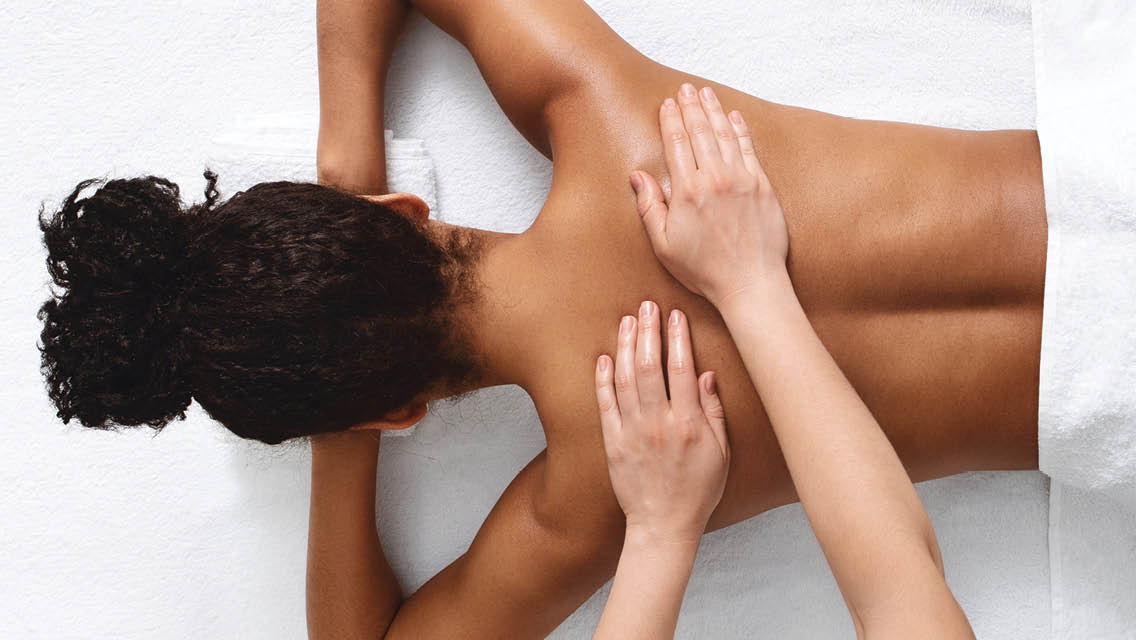When I was 37, my periods suddenly went haywire. They started appearing at a breakneck pace, with intervals between them of two weeks or less. It was exhausting and a bit scary.
Yet when I went to my clinic, the doctor just sighed, looked at her watch, and told me I was probably starting menopause.
Since the average age for reaching that milestone is 51, I would have been about 14 years ahead of schedule. I do like being early for things, but I still hoped we could consider other causes, and maybe some other solutions beyond beleaguered acceptance. She didn’t think so.
In search of a more satisfying approach, I went to the neighborhood acupuncture clinic. My intake form asked an array of bizarre questions about nonperiod matters: Did I crave cold drinks? Did I wake in the night, and if so, at what time?
When I sat in the treatment chair the kind-eyed practitioner took my pulse, nodding to himself. We spoke briefly, after which he placed tiny needles in my feet, along my shins, in my hands, and in my ears. None of them hurt. (OK, maybe one or two hurt a little.) Then I rested for an hour. That was it.
I returned weekly for the next few months for the same routine. Within eight weeks, my periods had resumed their normal monthly intervals, and they remained regular as clockwork for years.
If you had asked me what happened, I couldn’t have told you, but I also didn’t care. I was no longer menstruating near-continuously — that was explanation enough for me.
Energy Medicine, Considered
Many nonpharmaceutical, noninvasive healing modalities involve language that sounds suspiciously soft. What, for example, is an “energy blockage”? Can you see it, measure it, touch it? Is there a lab test for that?
All fair questions. Illness makes us vulnerable. The practice of medicine has always included charlatans peddling miracle cures and false hope, and none of us wants to be taken advantage of, especially when we’re down.
But the practice of medicine has also always included practitioners and practices that defied easy understanding — even as they routinely produced positive outcomes for their patients. This includes the category of healers who fall under the rather large umbrella of what’s now called “energy medicine.”
Acupuncture is but one example. This practice rests on the principle of qi (pronounced “chee”): vital energy. In this model, qi travels through the body in channels called meridians, and when we’re feeling healthy and strong, it’s flowing freely to all our organ systems.
A body is more than just muscles and bones. It also has an energy field, subtle and powerful, that strongly influences its overall function.
Illness, by contrast, is seen as the result of this energy being blocked, weak, congested. Health is recovered (usually gradually) by finding and releasing these blockages.
That is a too-simplistic explanation of a remarkably complex practice — one that also happens to have a substantial amount of evidence proving its efficacy in treating a broad range of conditions.
Yet the basic principle of energy medicine is relatively simple: A body is more than just muscles and bones. It also has an energy field, subtle and powerful, that strongly influences its overall function.
When healing is elusive by other means, an energetic imbalance in that field may be what remains to be treated. And even if we don’t believe in such ethereal stuff, or understand it, energy-healing practices often work anyway.
What Are We Doing Here?
Different people use different terms for the body’s energy. In Traditional Chinese Medicine it’s called “qi”; in Ayurveda, a system of traditional medicine in India, “prana”; in kinesiology, energy is called . . . “energy.” Scientists refer to Reiki and other forms of healing touch as “biofield therapies.” And that list is hardly exhaustive.
Energy-based healthcare practices are slowly gaining an evidence base to support their efficacy, even as explaining how they work has persistently bewildered researchers. The authors of one 2015 survey of biofield research acknowledged that it was still unclear whether the pain reduction demonstrated in some studies was produced by “bottom-up” processes, such as reduced cellular inflammation, or “top-down” processes involving pain receptors in the brain.
But work they do. One 2021 study of 120 women with osteoarthritis found that those who received healing-touch therapies experienced a significant reduction in pain compared to the control group.
And although results in cancer studies have been inconsistent, some have shown healing-touch practices corresponding to tumor inhibition and reduced spread of malignant cells when compared to controls. Hardly a reason to abandon conventional cancer care, but reason enough to consider including healing touch as a complementary component to a treatment plan.
Energetic healing modalities don’t require any particular leap of faith.
They can be used on their own to treat mild symptoms or in conjunction with conventional treatments for acute and chronic conditions.
Which brings us to the mission of this column. Given the vast troves of medical misinformation that have circulated throughout the pandemic, many of us now feel increasingly skeptical of any healing practices that fall outside the mainstream. I’ve noticed that in myself. And I haven’t only had a positive experience with acupuncture; I’m a healthcare journalist whose beat is integrative medicine.
Nonetheless, I believe it would be a terrible loss for our collective health if we were to ignore the potential benefits of a range of available healing practices, many of which have been in use for centuries.
Energetic healing modalities don’t require any particular leap of faith. They can be used on their own to treat mild symptoms or in conjunction with conventional treatments for acute and chronic conditions. They can often tip the scales toward health when nothing else does.
It’s true that many of these approaches are not covered by health insurance — which is a real barrier for many of us. Yet some are inexpensive; my community acupuncture sessions were offered on a sliding scale of $15 to $40.
Others are free, and still others may ultimately prove themselves worthy of the expense.
So, for now, this column will be dedicated to profiling a different natural healing modality in each issue. It will introduce some practices that may be unfamiliar and explain some modalities you may have heard of but never really understood. It will also address, from time to time, the thorny topic of how natural healing has been misused and misrepresented during the pandemic, and beyond it.
Our hope is to leave you better informed and more aware of your options, and perhaps even to open some doors to healing that you may not have known were there.
This article originally appeared as “Exploring Energy Medicine” in the January/February 2023 issue of Experience Life.





This Post Has 0 Comments